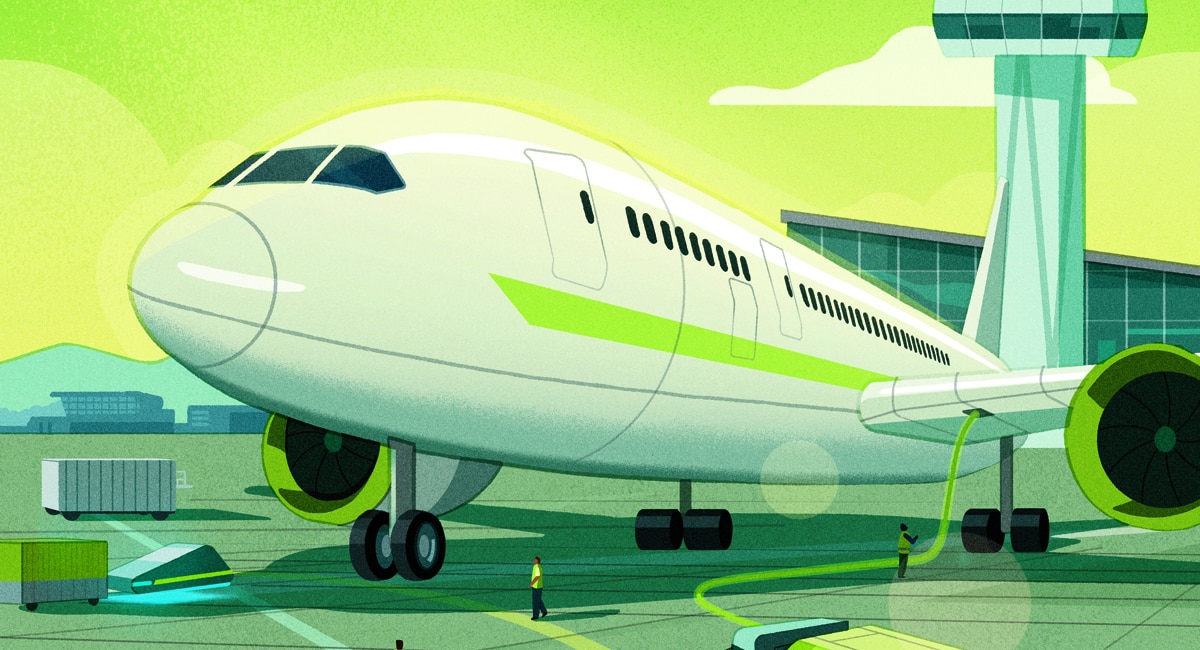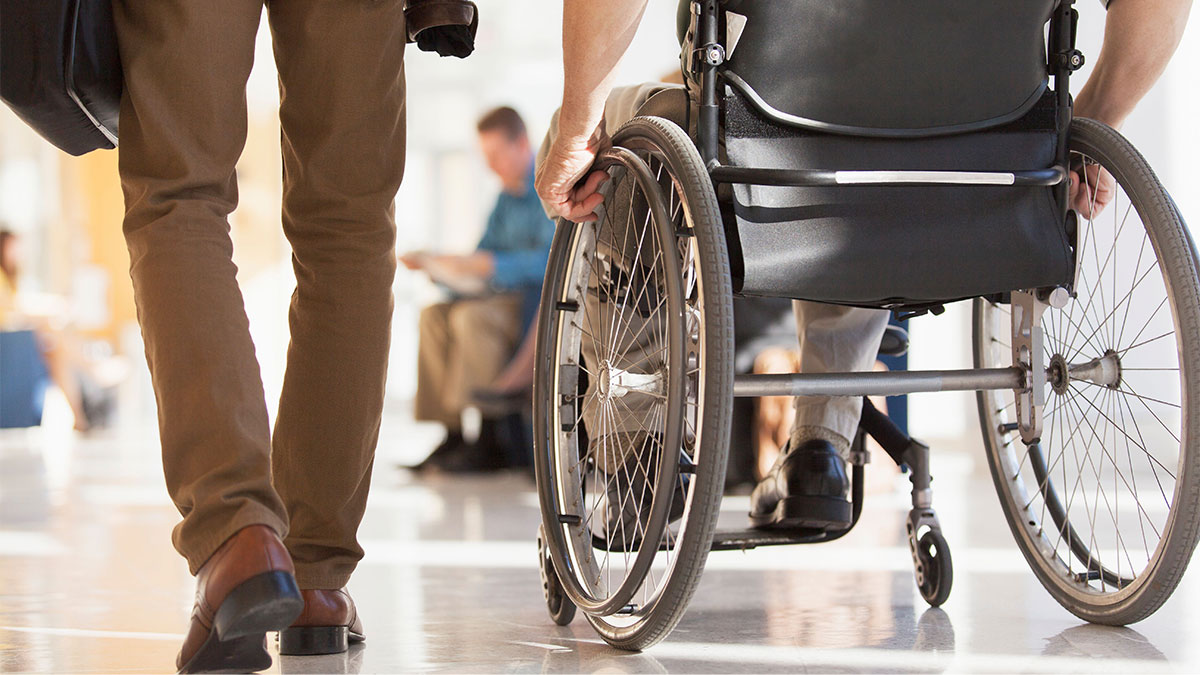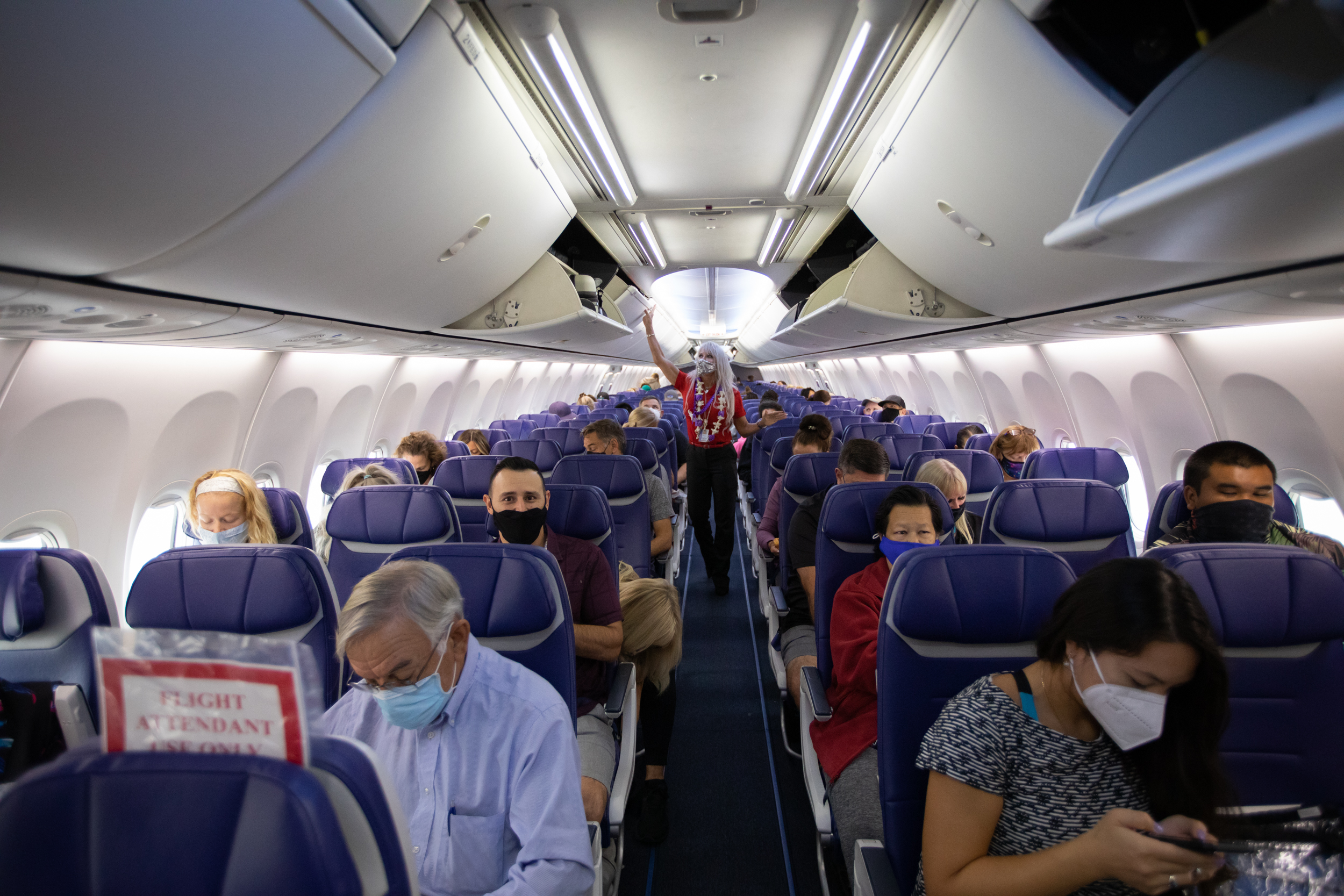How the World’s Biggest Airlines Are Working toward Net-Zero Emissions
July 25, 2022

Airlines are exploring—and implementing—numerous solutions to achieve their goal by 2050
With airlines—and passengers—paying growing attention to the impact of flight on climate change, aviation is making major investments in more sustainable air travel. From advancing the use of alternative fuels to developing new hydrogen-powered planes, airlines are targeting net-zero emissions by 2050.
More efficient aircraft and engines
By and large, the overall efficiency of the aviation fleet improves by two percent each year, largely due to the replacement of older aircraft. The nongovernmental International Energy Agency estimates that today’s aircraft are around 85 percent more efficient than those of the 1960s and about 20 percent more efficient than the aircraft they replace when they come into service. This, of course, depends on which planes are being replaced. Airbus cites a 30-percent fuel-burn improvement for the forthcoming A321XLR variant of its popular A321neo, but doesn’t specify which aircraft is being used for the comparison: presumably the now elderly Boeing 757, which first flew 40 years ago and was last produced in 2004. It seems likely that Covid and its effects on aviation—specifically the retirement of a huge number of older aircraft, particularly the 1990s-era Boeing 747-400—will have an accelerating effect here, as well. Looking to the future, the big bet is on hydrogen, with Airbus developing an airplane powered by this cleaner fuel by 2035, but there are many fundamental questions to be resolved before that becomes a reality.
More sustainable aviation fuels
Sustainable aviation fuels—often called “SAFs”—are a big contender for reducing emissions, primarily because they are “drop-ins.” In much the same way that modern gasoline is blended with ethanol, a certain percentage of Jet A-1 kerosene produced from fossil fuel can be replaced with kerosene from more sustainable sources. “Reducing carbon emissions from fuel is the fastest way United will reach our 100-percent-green goal by 2050,” says Lauren Riley, the airline’s chief sustainability officer.
While at present SAFs are more expensive to produce than fossil jet fuel, this difference is likely to shrink as they move toward commonplace industrialization and more players enter the market. Airlines are certainly keen, with both investments and contracts making the news. United Airlines, a leader in the area, announced an agreement in May with SAF producer Neste to supply up to 52.5 million gallons over the next three years at Amsterdam Schiphol and other airports. Earlier in the year, it invested in synthetic biotech company Cemvita Factory with the goal of producing new SAFs via bioengineered microbes, while last year the airline agreed to purchase 1.5 billion gallons from Alder Fuels. In December, United flew the first passenger flight during which 100-percent SAF was used in one of the two engines on board the Boeing 737 Max.
More optimized air traffic control
In the near term, making air traffic control more efficient is a big and relatively simple win. This includes programs like the U.S. Federal Aviation Administration’s NextGen, using technology such as satellite tracking, controller-to-flight-deck text communications, improved live weather forecasting and, ultimately, trajectory-based operations, where better information and improved infrastructure ensure the most efficient possible use of airspace.
More rail partnerships for shorter journeys
In some regions, airlines are even moving passengers away from flights and onto high-speed trains for short distances or connections. This is an improvement on the American Airlines bus between Philadelphia and Allentown. The latest airline to expand its air-to-train operations is Swiss, which is adding an international train from Munich to Zurich to match those from Geneva, Lugano and Basel. Parent airline Lufthansa offers similar options to numerous cities from the high-speed station next to Frankfurt Airport’s main terminal, while sister airline Austrian provides rail links from Vienna to Salzburg, Linz and Graz.



